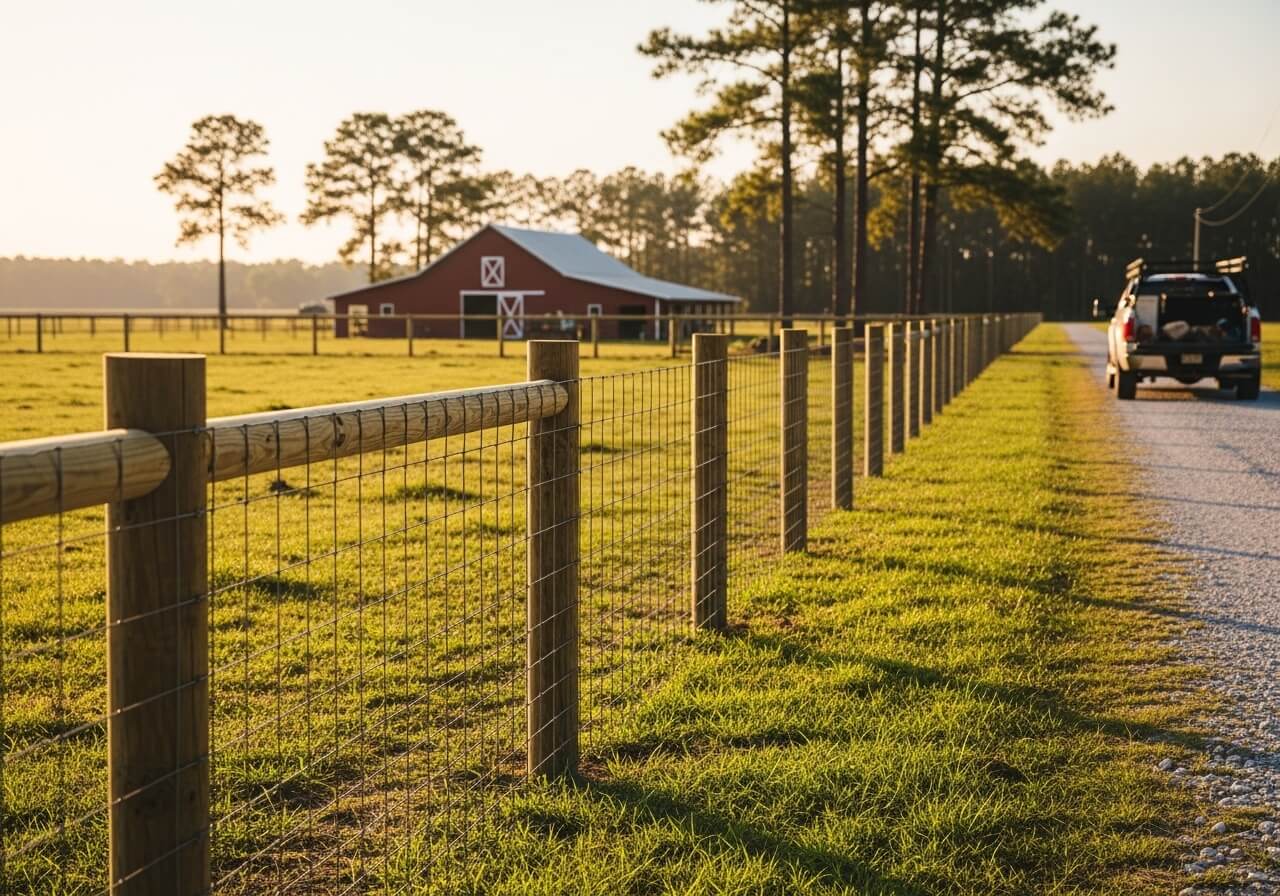
How to Build a Sheep and Goat Fence: A 5-Step DIY Guide
Step 1: Planning Your Fence Line & Gathering Materials
A successful fence project begins long before you dig the first hole. Proper planning ensures your fence is straight, strong, and placed exactly where you need it. Taking the time now saves you from costly mistakes later.
Mapping and Clearing Your Fenceline
First, walk your property to decide on the exact path for your new fence. Use flags or stakes to mark the location of all corners and gate openings. This visual guide will help you spot any potential issues, like uneven ground or obstacles that need to be cleared. If you’re planning a larger enclosure, consider a farm fence installation to ensure your layout is properly aligned for livestock movement and terrain.
Once your path is marked, clear a 3 to 4-foot-wide path along the entire fenceline. Removing trees, brush, and high weeds will give you a clean, safe workspace. A clear line is essential for stretching wire correctly and moving your materials around easily.
Selecting the Right Wire and Posts
Your choice of materials is critical for building a fence that withstands both your animals and our weather. For sheep and goats, a 4x4-inch woven goat wire is the best choice. The smaller openings prevent animals from getting their heads stuck and are strong enough to keep predators out. Many property owners also rely on woven wire fence installation for durable, long-lasting performance in humid climates.
In humid areas like Mobile, Alabama, and across the Florida Panhandle, metal corrosion is a major problem. Always choose Class 3 galvanized wire, as it has a much thicker protective coating than standard wire and will resist rust for decades. For posts, we recommend wood posts pressure-treated to a .60 CCA rating. This higher treatment level is essential for preventing rot and insect damage in the damp soil found from Pensacola to Tallahassee.
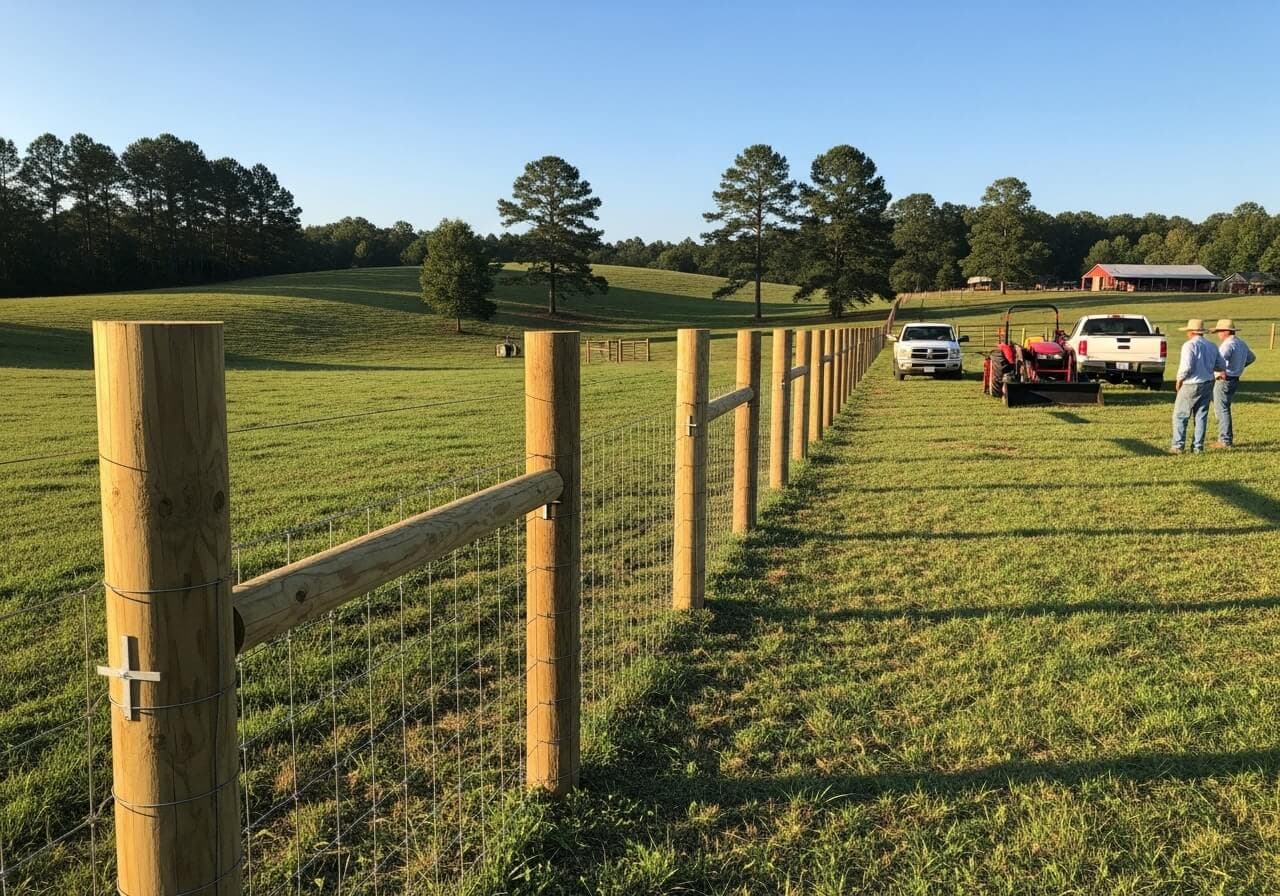
Assembling Your Tools and Hardware
Gathering all your tools beforehand makes the installation process much smoother. Having everything on hand means you can work efficiently without stopping to find a missing item. Here is a basic list to get you started:
- Post-hole digger or auger
- T-post driver
- Fence stretcher (come-along)
- Hammer and fencing staples
- Level and string line
- Wire cutters
- Safety gear (gloves, eye protection)

Step 2: Setting Strong Corner and Brace Posts
The corner assemblies are the backbone of your entire sheep and goat fence. These H-braces anchor the fence and absorb the immense tension of the wire. If your corners fail, the rest of the fence will sag and eventually collapse. For added strength and lower long-term maintenance, some ranchers opt for high tensile fence installation to handle heavier livestock or longer fence runs.
Excavating for Maximum Stability
In the sandy soil common across Florida, from Gainesville to Chipley, shallow post holes are a recipe for failure. To create a solid anchor, you must dig your corner post holes at least 3 to 4 feet deep. This depth ensures the posts won’t shift or pull out of the ground under tension or after heavy rains Ocala FL Fence Pros, 2025.
Building a Ranch-Tough H-Brace Assembly
A double H-brace is the gold standard for high-tensile strength at your corners. This setup uses three large-diameter posts (6-7 inches for the main anchor posts) and two horizontal cross-members. The brace distributes the fence tension across a wide area, creating an incredibly strong foundation.
The horizontal cross-member connecting the posts should be about twice as long as your fence is tall. For a 4-foot fence, this means an 8-foot brace. Set the posts in concrete to give them unmatched holding power, especially in the looser soils found in many parts of South Georgia and South Alabama.

Step 3: Installing the Line Posts
Need Help?
Get expert fencing advice and free quotes. Our team is ready to help with your project.
Available Mon-Fri, 8am-6pm EST
Line posts provide support for the fence wire between the sturdy corner braces. While not under the same tension as corner posts, their proper spacing and alignment are key to a straight and effective barrier.
Determining Proper Line Post Spacing
For a woven sheep fence, spacing your line posts 10 to 15 feet apart is a good rule of thumb. This distance keeps the wire properly supported and prevents sagging without adding unnecessary material costs. If your land has dips or rises, you may need to place posts closer together to ensure the fence follows the contour of the ground.
Driving Posts for a Straight, Sturdy Fence
To get a perfectly straight fence line, run a string line between your corner assemblies at the desired fence height. Set each line post so it just touches the string. Use a level to make sure every post is plumb (perfectly vertical) before tamping the dirt firmly around its base. This simple technique is used by professional fence builders from Dothan, Alabama to Valdosta, Georgia to guarantee a professional result.
Step 4: Stretching and Attaching the Fence Wire
Properly tensioned wire is what makes your fence a strong physical barrier. Loose, saggy wire is not only ineffective but can also be a safety hazard for your livestock. This step requires patience and the right tools.
Attaching and Preparing to Stretch
Start at one of your corner H-braces. Unroll the sheep wire fence and stand the first section up against the post. Wrap the vertical wires at the end of the roll around the corner post and tie them off securely. With the starting point anchored, you can unroll the rest of the wire along your fence line toward the next corner.
Achieving Proper Wire Tension
Attach the gate hinges to your main gate post, making sure they are securely fastened. Lift the gate and attach it to the hinges. Use a level to ensure the gate is perfectly horizontal before fully tightening the bolts. A well-hung gate should swing open and closed smoothly without sagging or dragging on the ground. For consistent function, farm gate installation helps ensure secure entry points that last for years.
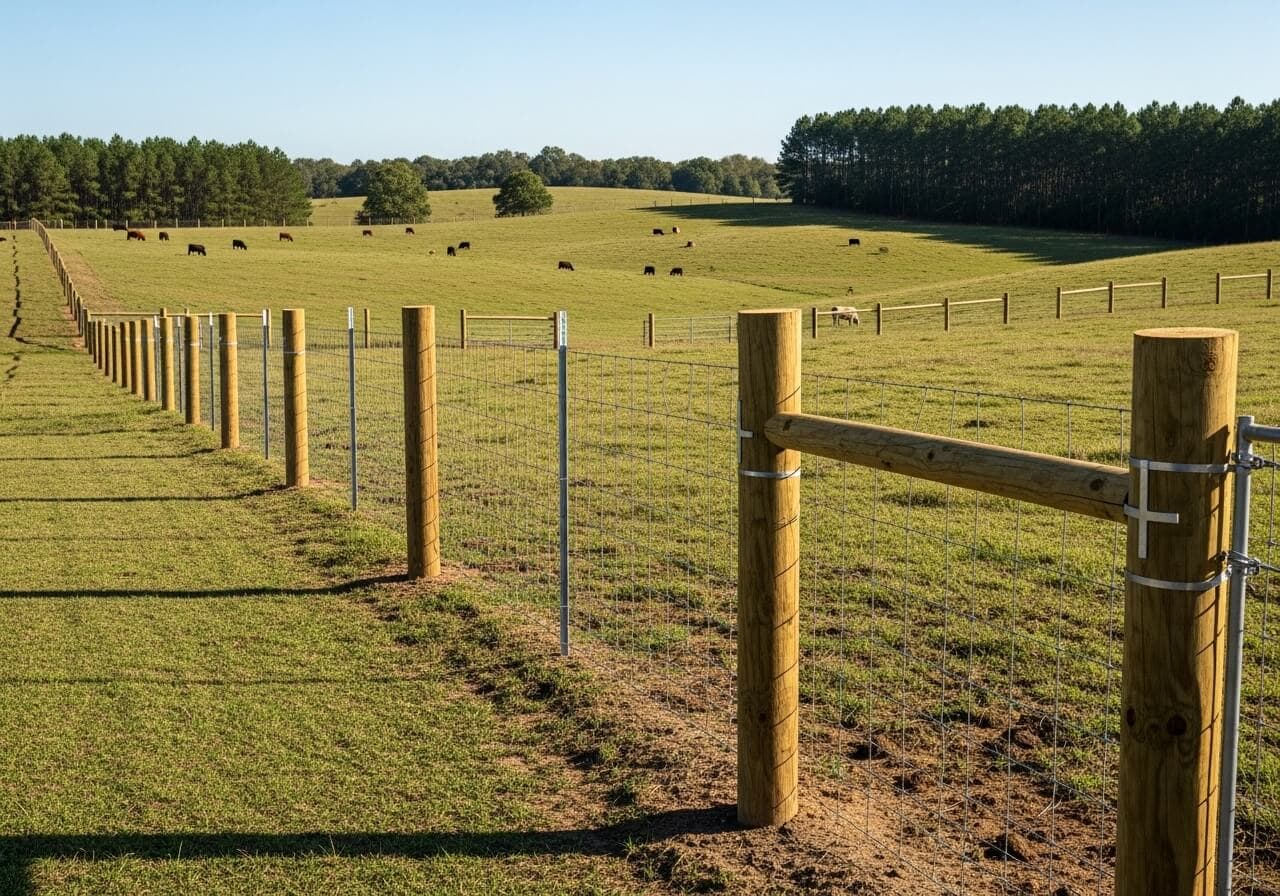
Securing the Fence with Staples
Once the wire is tight, secure it to each line post with fencing staples. When hammering the staples into wooden posts, do not drive them all the way in. The staple should hold the wire firmly but still allow it to move freely. This lets the wire expand and contract with temperature changes in places like Auburn, Alabama or Ocala, Florida, preventing stress and breakage.
Step 5: Finishing with Gates and Predator Guards
The final touches are what make your fence fully functional and secure. A properly installed gate provides easy access, while predator guards offer an extra layer of protection for your valuable animals.
Hanging Your Gate for a Secure Entry
Attach the gate hinges to your main gate post, making sure they are securely fastened. Lift the gate and attach it to the hinges. Use a level to ensure the gate is perfectly horizontal before fully tightening the bolts. A well-hung gate should swing open and closed smoothly without sagging or dragging on the ground.
Adding Predator and Escape Deterrents
Goats are known for digging, and predators like coyotes will try to get under a fence. To stop this, install a buried wire apron. Lay a 2-foot wide section of fence wire flat on the ground along the outside of your fence and secure it with landscape staples, then cover it with dirt. Pests and livestock can't dig through this barrier Bomann Fencing, 2025.
For an extra layer of security, especially in rural areas around Andalusia, Alabama or Naylor, Georgia, consider adding a single strand of electric wire. Place it on offset insulators about six inches from the bottom or top of the fence. This will give a mild shock to any animal that tries to dig under or climb over, quickly teaching them to respect the fenceline.
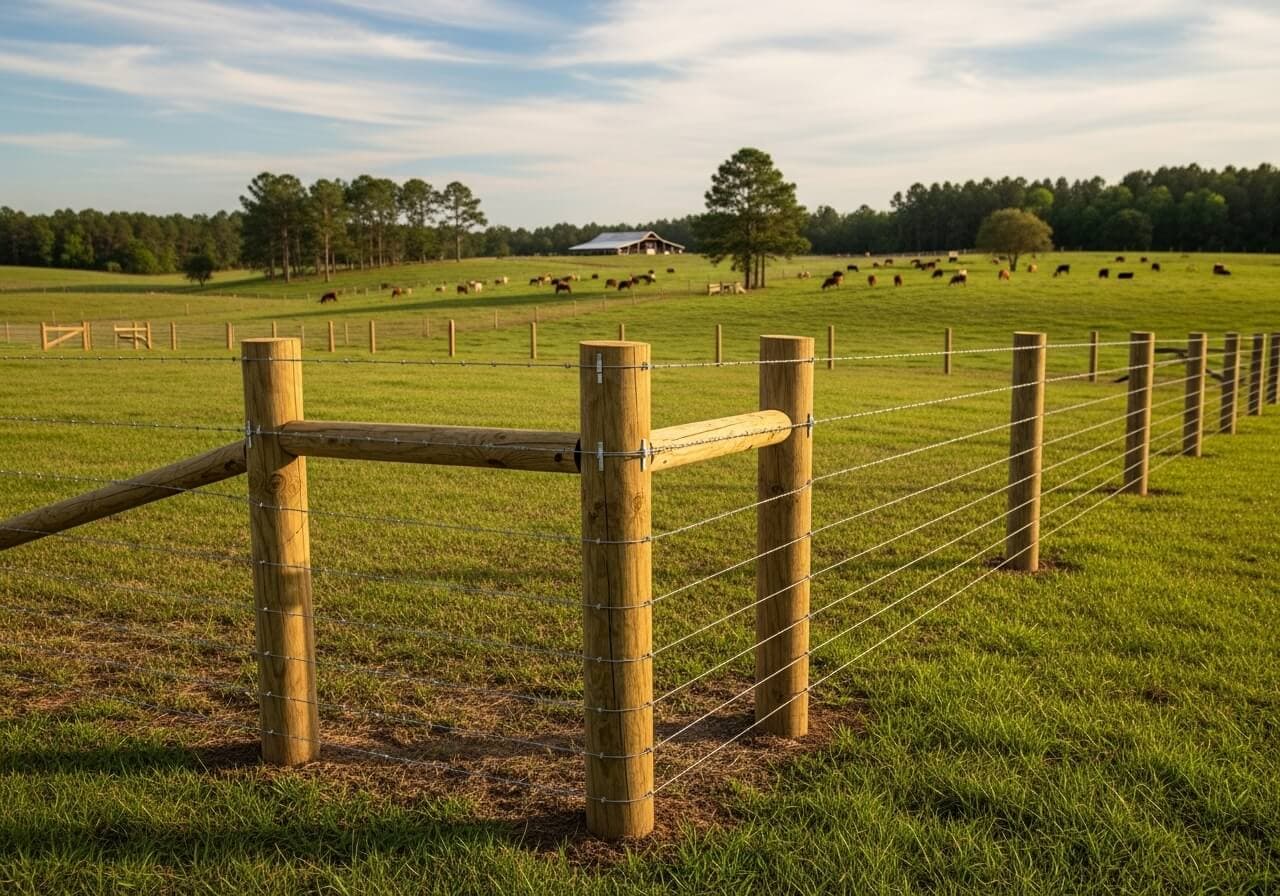
Frequently Asked Questions
What is the best type of sheep and goat fence for Florida?
The best sheep and goat fence for Florida is a 4-foot to 5-foot tall woven wire fence with 4x4-inch openings. It is crucial to use Class 3 galvanized wire to combat rust from the high humidity and salt air, especially in coastal areas like Panama City.
How tall does a fence need to be to contain goats?
For most goat breeds, a 4-foot (48-inch) fence is sufficient. However, for more athletic breeds known for jumping, like Nigerian Dwarfs or Alpines, a 5-foot (60-inch) fence is a safer choice to ensure they stay contained ProFence, 2025.
How can I stop my goats from digging under the fence?
The most effective way to stop digging is to install a buried wire apron. Lay a section of fence material flat on the ground along the outside of the fenceline and bury it. This physical barrier prevents animals from being able to dig at the base of the fence.
What is the average cost to install a sheep and goat fence 330 ft roll?
The cost varies based on materials and labor. A 330 ft roll of quality woven wire may cost $250-$400. The total installed cost for a sheep and goat fence 330 ft in length can range from $1,000 to over $2,500, depending on the number of posts, terrain, and whether you hire a professional.
Can I use an electric fence for sheep and goats in a high-rainfall area?
Yes, but it requires careful management. In high-rainfall areas like the Southeast, vegetation grows quickly and can short out the fence. You must keep the fenceline clear of weeds and grass. Using a powerful, low-impedance charger is also essential to maintain a strong shock.
Your Partner for a Fence Built to Last
Building a DIY sheep and goat fence that lasts involves more than just setting posts and stretching wire. It requires deep anchors for our sandy soil, strong corner braces, and using the right materials to fight our humid climate. This 5-step guide gives you the blueprint for a fence you can be proud of.
However, if the project seems too complex or you want a professionally engineered fence guaranteed to protect your livestock for decades, we are here to help. At Bomann Fencing, we are farmers serving farmers with expertise you can trust.
If you're in the Florida Panhandle, South Alabama, or South Georgia, call Bomann Fencing today for a free, no-obligation quote and let's build a fence that stands the test of time.
Share this article
Related Posts
Need Help?
Get expert fencing advice and free quotes. Our team is ready to help with your project.
Available Mon-Fri, 8am-6pm EST
Related Posts
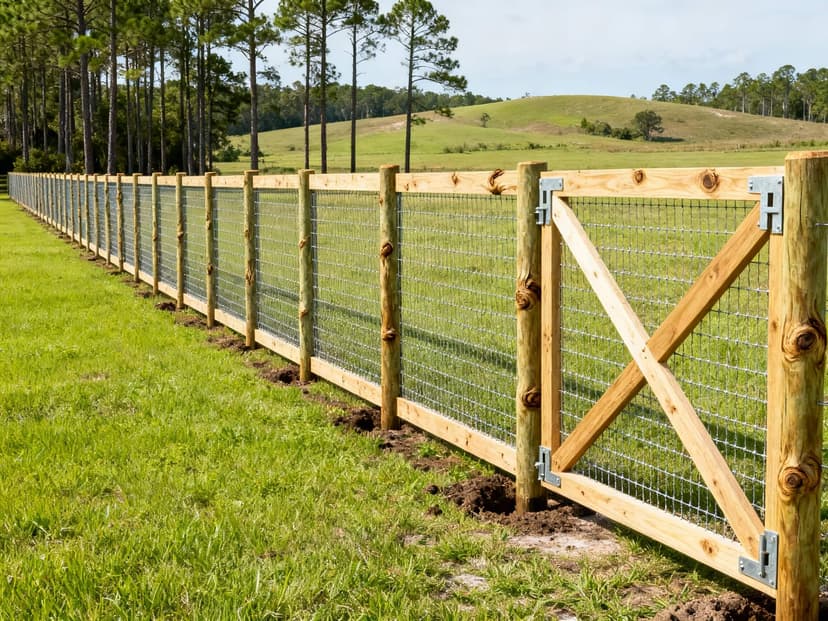
8 Ft Deer Fence Guide: Materials & Pro Installation
Planning Your Investment: Materials, Layout, and an 8 Ft Deer Fence Protecting your property, crops, or livestock from d...
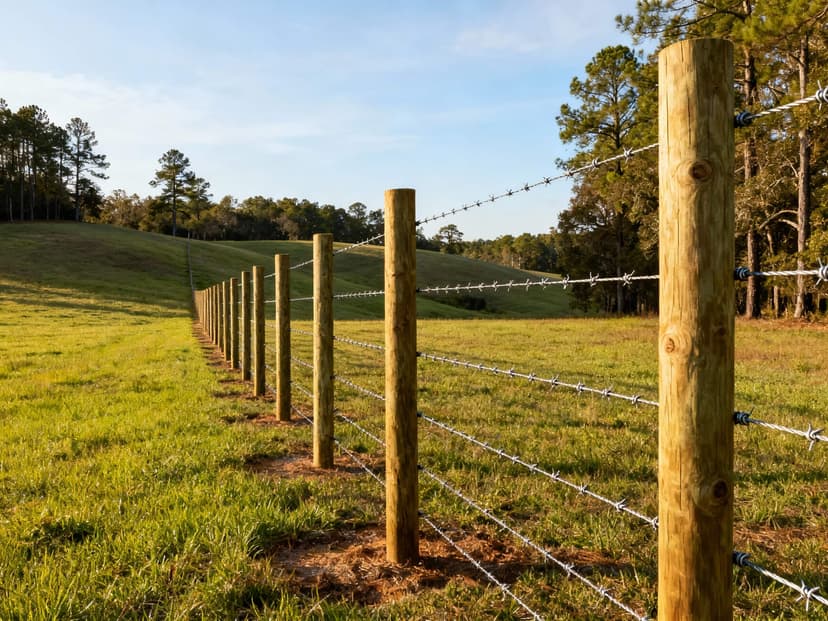
Game Fence Guide: Choosing the Best for CWD & Asset Protection
Why a High-Security Game Fence is a Critical Investment For landowners with large properties, a high-security game fence...

5 Goat Fence Ideas to Keep Your Herd Safe in the Southeast
Top Goat Fence Ideas for Southeastern Farms Your goats are clever, curious, and natural escape artists. Here in the Sout...
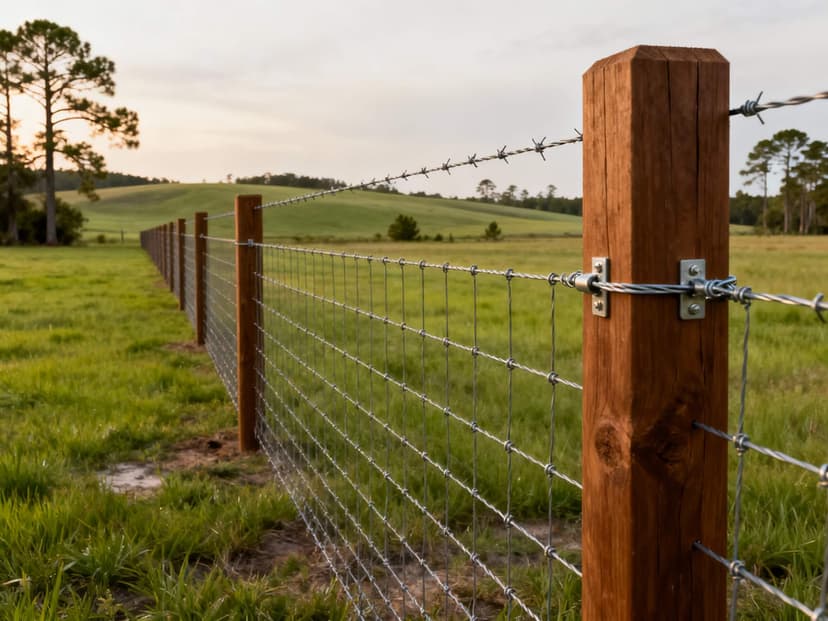
A Farmer's Guide to Stock Fence Wire in the Southeast
Why a Quality Wire Coating is Non-Negotiable in the Southeast Living and working in the Southeast means dealing with a u...
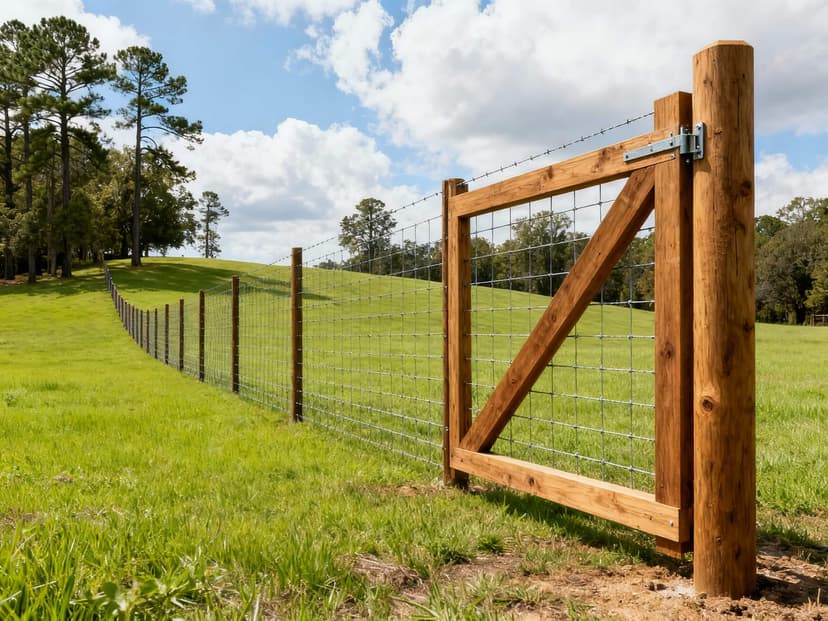
Stock Fencing Guide: Choosing the Best for Southeast Farms
A Complete Guide to Stock Fencing for a Southeastern Farm Choosing the right stock fence is one of the most critical dec...






